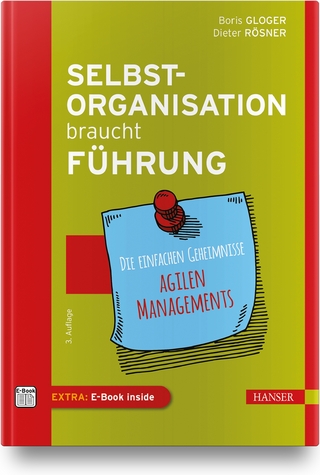
Agile by Design
John Wiley & Sons Inc (Verlag)
978-1-118-90566-1 (ISBN)
Achieve greater success by increasing the agility of analytics lifecycle management Agile by Design offers the insight you need to improve analytic lifecycle management while integrating the right analytics projects into different frameworks within your business. You will explore, in-depth, what analytics projects are and why they are set apart from traditional development initiatives. Beyond merely defining analytics projects, Agile by Design equips you with the information you need to apply agile methodologies in a way that tailors your approach to individual initiatives—and the needs of your projects and team.
Lifecycle management is a complex subject area, and with the increasingly important integration of analytics into multiple facets of business models, understanding how to use agile tools while managing a product lifecycle is essential to maintaining a competitive edge in today's professional world.
Gain an understanding of the principles, processes, and practices associated with effective analytic lifecycle management
Discover techniques that will enable you to successfully initiate, plan, and execute analytic development projects with an eye for the opportunity to engage agile methodologies
Understand agile development frameworks
Identify which agile methodologies are best for different frameworks—and how to apply them throughout the analytic development lifecycle
With analytics becoming increasingly important in today's business world, you need to understand and apply agile methodologies in order to meet rising standards of efficiency and effectiveness. Agile by Design is the perfect reference for project managers, CFOs, IT managers, and marketing managers who want to cultivate a relevant, forward-thinking lifecycle management style.
RACHEL ALT-SIMMONS, MBB, PMI-ACP, PMP, CSM, is a principal consultant within the Financial Services Practice at SAS Institute and an adjunct faculty member at Boston University. She is a performance-excellence business intelligence (BI) and analytics practitioner with deep experience in the insurance and financial services industries.
Introduction xiii
About the Author xix
Chapter 1 Adjusting to a Customer-Centric Landscape 1
It’s a Whole New World 1
From Customer-Aware to Customer-Centric 3
Being Customer-Centric, Operationally Efficient, and Analytically Aware 6
Our Example in Motion 9
Enabling Innovation 10
Chapter 2 The Analytic Lifecycle 13
What Are Analytics, Anyway? 13
Analytics in Your Organization 15
Case Study Example 17
Beyond IT: The Business Analytic Value Chain 18
Analytic Delivery Lifecycle 19
Stage One—Perform Business Discovery 20
Stage Two—Perform Data Discovery 21
Stage Three—Prepare Data 22
Stage Four—Model Data 23
Stage Five—Score and Deploy 24
Stage Six—Evaluate and Improve 25
Getting Started 25
Summary 26
Chapter 3 Getting Your Analytic Project off the Ground 27
A Day in the Life 29
Visioning 30
Facilitating Your Visioning Session 32
Think Like a Customer 33
Summary 36
Chapter 4 Project Justification and Prioritization 37
Organizational Value of Analytics 37
Analytic Demand Management Strategy 38
Results 40
Project Prioritization Criteria 42
Value-Based Prioritization 43
Financial-Based Prioritization 45
Knowledge Acquisition Spikes 46
Summary 47
Chapter 5 Analytics—the Agile Way 49
Getting Started 49
Understanding Waterfall 51
The Heart of Agile 53
The Agile Manifesto/Declaration of Interdependence 54
Selecting the Right Methodology 57
Scrum 58
eXtreme Programming (XP) 59
Summary 61
Chapter 6 Analytic Planning Hierarchies 63
Analytic Project Example 63
Inputs into Planning Cycles 66
Release Planning 69
Analytic Release Plan 70
Release Train 71
Summary 73
Chapter 7 Our Analytic Scrum Framework 75
Getting Started 75
The Scrum Framework 77
Sprint Planning 78
Sprint Execution 80
Daily Standup 81
How Do We Know When We’re Done? 82
Sprint Review 83
Sprint Retrospective 85
Summary 85
Chapter 8 Analytic Scrum Roles and Responsibilities 87
Product Owner Description 89
Product Owner: A Day in the Life 91
ScrumMaster Description 92
ScrumMaster: A Day in the Life 94
Analytic Development Team Description 95
Additional Roles 97
Summary 98
Chapter 9 Gathering Analytic User Stories 101
Overview 101
User Stories 103
The Card 104
Analytic User Story Examples 105
Technical User Stories 106
The Conversation 107
The Confirmation 107
Tools and Techniques 108
INVEST in Good Stories 109
Epics 111
Summary 112
Chapter 10 Facilitating Your Story Workshop 113
Stakeholder Analysis 113
Managing Stakeholder Influence 116
Agile versus Traditional Stakeholder Management 118
The Story Workshop 118
Workshop Preparation 119
Facilitating Your Workshop 121
Must-Answer Questions 123
Post-Workshop 124
Summary 126
Chapter 11 Collecting Knowledge Through Spikes 127
With Data, Well Begun Is Half Done 127
The Data Spike 129
Data Gathering 131
Visualization and Iterations 135
Defining Your Target Variable 136
Summary 138
Chapter 12 Shaping the Analytic Product Backlog 141
Creating Your Analytic Product Backlog 141
Going DEEP 145
Product Backlog Grooming 146
Defining “Ready” 146
Managing Flow 147
Release Flow Management 148
Sprint Flow Management 148
Summary 149
Chapter 13 The Analytic Sprint: Planning and Execution 151
Committing the Team 151
The Players 153
Sprint Planning 154
Velocity 155
Task Definition 156
The Team’s Definition of Done 158
Organizing Work 159
Sprint Zero 160
Sprint Execution 161
Summary 163
Chapter 14 The Analytic Sprint: Review and Retrospective 165
Sprint Review 165
Roles and Responsibilities 168
Sprint Retrospective 168
Sprint Planning (Again) 171
Layering in Complexity 173
Summary 175
Chapter 15 Building in Quality and Simplicity 177
Quality Planning 177
Simple Design 181
Coding Standards 183
Refactoring 184
Collective Code Ownership 185
Technical Debt 186
Testing 187
Verification and Validation 188
Summary 189
Chapter 16 Collaboration and Communication 191
The Team Space 191
Things to Put in the Information Radiator 194
Analytic Velocity 195
Improving Velocity 196
The Kanban or Task Board 197
Considering an Agile Project Management Tool 198
Summary 200
Chapter 17 Business Implementation Planning 203
Are We Done Yet? 203
What’s Next? 205
Analytic Release Planning 206
Section 1: What Did We Do, and Why? 206
Section 2: Supporting Information 208
Section 3: Model Highlights 208
Section 4: Conclusions and Recommendations 208
Section 5: Appendix 209
Model Review 209
Levers to Pull 210
Persona-Based Design 211
Segmentation Case Study 213
Summary 214
Chapter 18 Building Agility into Test-and-Learn Strategies 215
What Is Test-and-Learn? 215
Layering in Complexity 218
Incorporating Test-and-Learn into Your Model Deployment Strategy 219
Creating a Culture of Experimentation 221
Failing Fast and Frequently 222
Who Owns Testing? 222
Getting Started 223
Summary 225
Chapter 19 Operationalizing Your Model Deployment Strategy 227
Finding the Right Model 227
Simplicity over Complexity 231
How Deep Do We Go? 231
What Is an Operational Model Process? 232
Getting Your Data in Order 234
Automate Model-Ready Data Processes 235
So Who Owns It? 236
What If I Can’t Automate This Process Right Now? 236
Determine Model Scoring Frequency 237
Model Performance Monitoring 239
Analytics—the Success to Plan For 241
Summary 243
Chapter 20 Analytic Ever After 245
Beginning Your Journey 245
Supporting the Analytic Team 246
The Importance of Agile Analytic Leadership 248
Finding a Pilot Project 249
Scaling Up 249
The End of the Beginning 251
Sources 253
Index 255
| Reihe/Serie | SAS Institute Inc |
|---|---|
| Verlagsort | New York |
| Sprache | englisch |
| Maße | 160 x 236 mm |
| Gewicht | 485 g |
| Themenwelt | Wirtschaft ► Betriebswirtschaft / Management ► Projektmanagement |
| ISBN-10 | 1-118-90566-0 / 1118905660 |
| ISBN-13 | 978-1-118-90566-1 / 9781118905661 |
| Zustand | Neuware |
| Haben Sie eine Frage zum Produkt? |
aus dem Bereich


